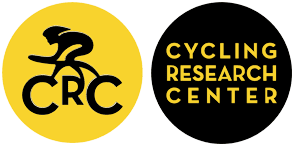An optimal control approach to the high intensity interval training design
Keywords:
High-Intensity-Training, cycling, mathematical models, optimal controlAbstract
Introduction: Prediction of the acute response induced by various training protocols is of great importance when looking for a systematic approach in designing high intensity training (HIT) sessions. The prediction of some of the indexes of the metabolic load (e.g. pulmonary oxygen consumption (VO2(t), [mlO2/min]), blood lactate concentration ([Lab]-, mM), anaerobic source depletion (AnS, [J])) induced by the mechanical load (i.e. the intensity of the exercise (P(t), [W]), can rely on theoretical tools like mathematical models. The purpose of this study was twofold: 1) to develop a bioenergetic model of cycling best suited for an optimal control framework and 2) to use an optimal control algorithm (Bertolazzi2005) to predict the best combination of the parameters defining a HIT session (Buchheit2013).
Methods: We adapted the well-known MM 3-compartment model (Morton1986) for the optimal control application. The VO2(t), [Lab]-(t) and AnS(t) in response to a generic P(t) was possible by means of the resulting system of differential equations. The model was calibrated and tested when tracking experimental data collected on a trained cyclist (PPO=300W, VO2max=50mlO2/min/kg) cycling on an indoor ergometer at different workloads. To evaluate the goodness of fit with actual data we calculated: the averaged value of residuals AvE, the Pearson’s r and the R2. The optimal control algorithm was asked to find the combination of the main parameters defying a HIT session (i.e. work interval time and intensity (tw, [s] and Pw, [W]), recovery interval time and intensity (tr, [s] and Pr, [W])) that, in n=5 bouts, total training time (tf =32min) and anaerobic sources (AnS0=22kJ), maximized the time spent above the 90% of VO2max (T@VO2max90%, [min]).
Results: Model was capable to replicate with good accuracy the experimental data of VO2(t) and [Lab]-(t) in similar conditions (r>0.85, R2>0.65, AvgE<SE), giving confidence in applying this model in the estimation of AnS(t). The optimal control algorithm suggested for a HIT session in which the work intervals are interspersed by recovery intervals with different time durations (see Fig. 1). We found that: T@VO2max90%≈10 min and %T@VO2max90%≈30% with working intervals at 100%PVO2max of ~3’, 3:30”, 2’:20”, 3’:30”, 3’ interspersed by recovery intervals at light intensity of ~1’:30”, 3’:30”, 9’, 1’:30”. Average simulated P(t) was ~218 W.
Discussion: Simulated data are close to those reported in the literature for similar training protocols (T@VO2max90%, %T@VO2max90%). The optimal control algorithm suggests that we can improve classical training protocols in which the working and recovery intervals are constant across the session. With individualized parameters it is possible to estimate the response of the athlete to the induced metabolic load and then to generate more time-efficient and more effective training sessions.
Conclusion: Mathematical models and optimal control can offer a valid contribution in a systematic approach to the HIT design in cycling as they can handle the complexity of parameters that usually show mutual interaction. To the best of our knowledge, there are no methods available in the literature that can systematically handle the problem of optimizing the HIT protocols. The method suggest moving towards protocol in which working and recovery time intervals are not constant across the exercise.
Downloads
Published
How to Cite
Issue
Section
Copyright (c) 2016 Journal of Science and Cycling

This work is licensed under a Creative Commons Attribution-NonCommercial 4.0 International License.
Authors contributing to Journal of Science and Cycling agree to publish their articles under a Creative Commons CC BY-NC-ND license, allowing third parties to copy and redistribute the material in any medium or format, and to remix, transform, and build upon the material, for any purpose, even commercially, under the condition that appropriate credit is given, that a link to the license is provided, and that you indicate if changes were made. You may do so in any reasonable manner, but not in any way that suggests the licensor endorses you or your use.
Authors retain copyright of their work, with first publication rights granted to Cycling Research Center.






